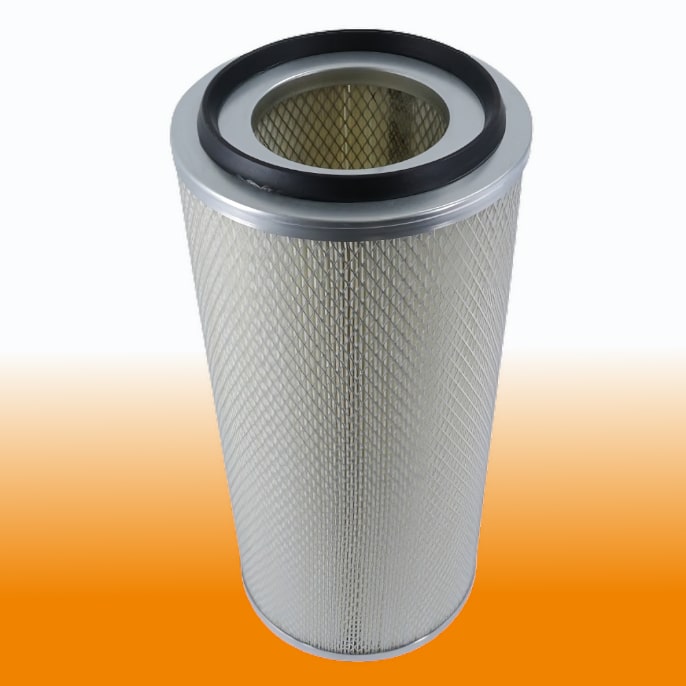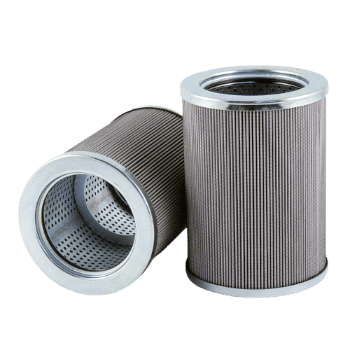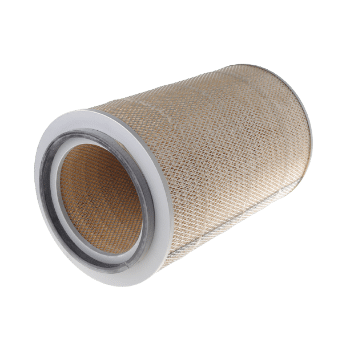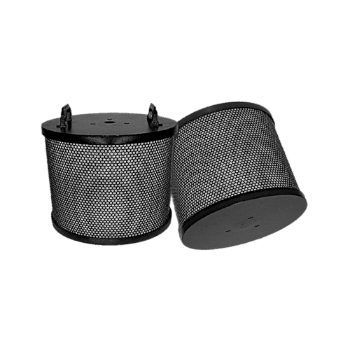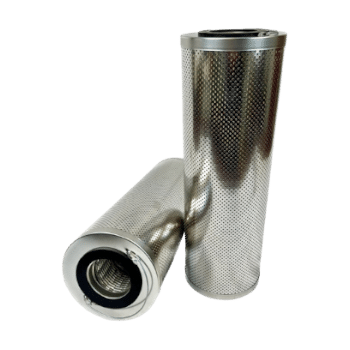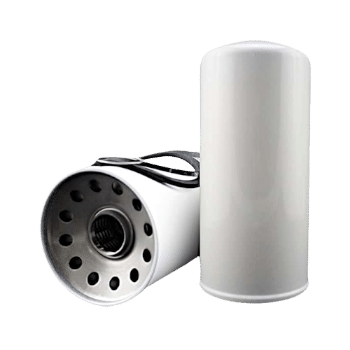Replacement for Complete 1915526101 NANO-Fiber MERV 15 Dust Collector Filter
$118.85
Direct replacement for Complete 1915526101 dust collector filter element in form, fit, and function. Made in America with ISO 9001:2015 compliant manufacturing for assured quality. Optimized NANO-Fiber MERV 15 media is used for fine filtration, long life, and high dirt-holding capacity.
- 13.88″ OD x 9.48″ ID Top x 25.96″ Length overall
- 0.5 Micron
- 75 PSID Collapse Pressure
- Scroll down for additional specs
LIVE UPS or LTL rates calculated on the checkout page

- Guaranteed direct replacement – no need for modification
- Produced in an ISO Certified manufacturing facility for consistency and reliability
- High dirt-holding capacity while lowering initial pressure drop for longer service life
- 85% of orders ship within 24 hours – minimize your equipment downtime
Specs
| O.D. | 13.88" |
|---|---|
| I.D. Top | 9.48" |
| I.D. Bottom | 9.48" |
| Length Overall | 25.96" |
| Construction Type | Double Open End, NANO-Fiber MERV 15 media |
| Efficiency | 0.5 Micron |
| Gasket Material | Buna-N |
| Wire Support | Yes |
| Max Operating Pressure | 75 PSID Collapse Pressure |
| Max Temp | 150 Degrees F |
| Weight Each | 22 |
| Carton Qty | 1 |
| Condition | New |
Returns (applies only to USA shipments)
No goods may be returned without authorization by ISO Filtration.
– Return authorization is valid for 30 days only.
– Products shipped by our error will be accepted for return with full credit.
– Shipping discrepancies must be brought to ISO Filtration’s attention within 10 days of receipt of shipment.
– Standard products may be returned for a credit with proper authorization within three months of the date of invoice, with up to a 50% restocking fee and freight cost.
– No RGA’s will be issued after 30 days from invoice date.
– Returned products must be in new saleable (packaging unopened) condition or no credit will be offered.
– ISO Filtration reserves the right to determine the acceptability of the returned goods for resale.
ISO Filtration can ship orders out of the U.S.A., if the following criteria are met:
1. There is a minimum order of $500 USD for shipments outside of North America.
2. All payments are made in full before the order is manufactured.
3. There are no cancellations or alterations allowed after payment is made and manufacturing has begun.
4. ALL orders are EX WORKS, meaning the purchaser is responsible for all freight arrangements and facilitates pick up at the designated facility. The final destination must be disclosed in writing to ISO Filtration – Source One N.A., LLC. All shipments must comply with E.A.R. regulations.
5. Products shipped outside of the United States of America are non-returnable, non-cancellable, and non-refundable.
A hydraulic filter is a device that is used to remove contaminants, such as dirt, debris, and air bubbles, from hydraulic fluid in a hydraulic system. Hydraulic systems are used in a variety of industrial and commercial applications, including construction equipment, manufacturing machinery, and transportation vehicles. The hydraulic fluid is responsible for transmitting power and energy within the system, and it is essential that it is kept clean and free of contaminants.
The primary function of a hydraulic filter is to protect the equipment and components in the hydraulic system from damage caused by contaminants. When contaminants are present in the fluid, they can cause wear and tear on the system, leading to costly repairs and downtime. By regularly replacing and maintaining hydraulic filters, the health of the equipment can be maintained and its lifespan extended.
Regular hydraulic filter replacement is important because the filter element becomes clogged with contaminants over time, which can reduce its effectiveness and impact the performance of the system. As the filter becomes clogged, it becomes more difficult for the fluid to pass through it, which can lead to increased pressure and reduced flow rate. This can lead to reduced efficiency and performance of the equipment, as well as increased wear and tear on the system.
In addition, contaminants that are trapped in the filter element can break loose and enter the system, which can cause damage to the equipment and components. This can lead to costly repairs and downtime. By regularly replacing the filter, these contaminants can be removed from the system and the risk of equipment damage can be minimized.
Overall, regular hydraulic filter replacement is important to ensure that the filter is functioning properly and the equipment is operating at its optimal level of performance. By following the manufacturer’s recommendations for filter replacement intervals and regularly inspecting the filter element, it is possible to extend the lifespan of the equipment and minimize the risk of costly repairs and downtime. Generally, the filter should be changed when the differential pressure (PSID) reaches or exceeds 25 PSID.
A micron, also known as a micrometer, is a unit of length that is equal to one millionth of a meter. It is commonly used to measure the size of particles in liquid filtration systems.
In the context of liquid filtration, the size of the particles being removed is an important consideration, as smaller particles are more difficult to filter out than larger particles. Filters are typically rated in terms of the size of particles that they can effectively remove, with smaller values indicating a higher level of filtration. For example, a filter with a rating of 1 micron is capable of removing particles that are 1 micron in size or larger, while a filter with a rating of 0.1 micron is capable of removing particles that are 0.1 micron in size or larger.
The beta ratio, also known as the beta value, is a measure of the efficiency of a filter at removing particles of a particular size. It is typically used to compare the performance of different filters or filter media and is often used in the selection and design of liquid filtration systems.
The beta ratio is calculated by dividing the number of particles of a particular size that are removed by a filter by the total number of particles of that size that are present in the fluid being filtered. For example, if a filter is able to remove 90% of the particles that are 1 micron in size from a fluid, its beta ratio for 1 micron particles would be 90.
The beta ratio can be used to compare the performance of different filters or filter media at removing particles of a particular size. A filter with a higher beta ratio is more efficient at removing particles of that size than a filter with a lower beta ratio.
Microglass, also known as microfiberglass, is a type of synthetic fiber that is commonly used in liquid filtration systems due to its high efficiency and good filtration properties. Microglass is made from extremely fine fibers of glass that are tightly woven together to form a filter media.
There are several reasons why microglass is well-suited for use in liquid filtration:
-Microglass has a high dirt holding capacity, which means it is able to filter a large volume of fluid before becoming clogged and needing to be replaced.
-Microglass has a high efficiency at removing small particles, making it suitable for use in high-purity filtration applications.
-Microglass is resistant to chemicals and corrosion, which makes it suitable for use in a wide range of filtration applications.
-Microglass is durable and has a long lifespan, which makes it a cost-effective choice for many filtration systems.
Overall, microglass is a popular choice for liquid filtration due to its high efficiency, good filtration properties, and durability.

